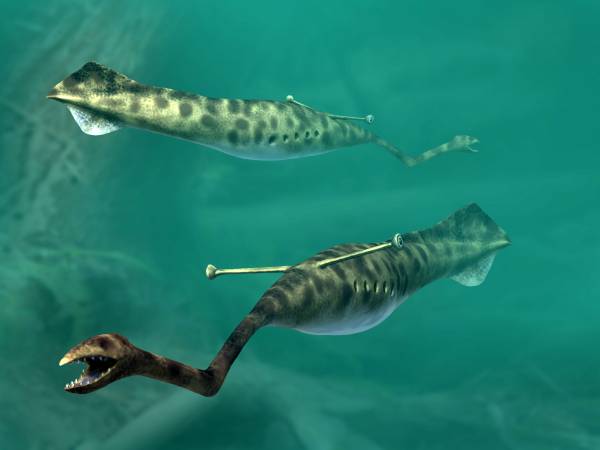
As recently reported. Worse luck, most of us probably didn’t even know about the Tully Monster. Well, … from ScienceDaily:
Last year, news headlines declared that a decades-old paleontological mystery had been solved. The ‘Tully monster,’ an ancient animal that had long defied classification, was in fact a vertebrate, two groups of scientists claimed. Specifically, it seemed to be a type of fish called a lamprey. The problem with this resolution? According to a group of paleobiologists, it’s plain wrong.

“This animal doesn’t fit easy classification because it’s so weird,” said Sallan, an assistant professor in Penn’s School of Arts & Sciences’ Department of Earth and Environmental Science. “It has these eyes that are on stalks and it has this pincer at the end of a long proboscis and there’s even disagreement about which way is up. But the last thing that the Tully monster could be is a fish.”
In a new report in the journal Palaeontology, Sallan and colleagues argue that the two papers that seemingly settled the Tully monster debate are flawed, failing to definitively classify it as a vertebrate. The mystery of the Tully monster, known to scientists as Tullimonstrum gregarium, remains.
…
“You would expect at least a handful of the specimens to have preserved these structures,” Sallan said. “Not only does this creature have things that should not be preserved in vertebrates, it doesn’t have things that absolutely should be preserved.” Paper. (public access) – Lauren Sallan, Sam Giles, Robert S. Sansom, John T. Clarke, Zerina Johanson, Ivan J. Sansom, Philippe Janvier. The ‘Tully Monster’ is not a vertebrate: characters, convergence and taphonomy in Palaeozoic problematic animals. Palaeontology, 2017; DOI: 10.1111/pala.12282 More.
We’ll leave them to it. There have been many strange life forms before and since. Consider the tulip animal from over half a billion years ago:
See also: Cambrian explosion: “Tulip animal” had unique feeding system ““Most interesting is that this feeding system appears to be unique among animals. Recent advances have linked many bizarre Burgess Shale animals as primitive members of many animal groups that are found today, but Siphusauctum defies this trend. We do not know where it fits in relation to other organisms,” said lead author O’Brien.”
Follow UD News at Twitter!
vs.